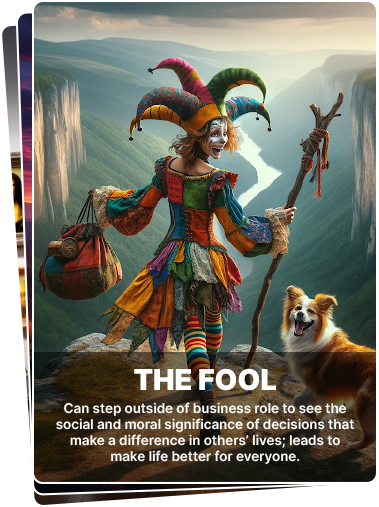The domain of leadership studies presents a complex tapestry woven from numerous theories, including transformational leadership, ethical leadership, servant leadership, authentic leadership, and situational leadership, among others. This extensive diversity highlights the myriad ways scholars and practitioners conceptualize and define leadership, but simultaneously introduces a significant philosophical challenge: no single theory comprehensively captures all aspects of leadership. Each theory inevitably emphasizes certain characteristics at the expense of others, may lack practical specificity, or offers prescriptions too narrow to account for exceptions encountered in real-world scenarios. Definitions range from frustratingly vague to excessively restrictive, and succinct aphorisms like "leaders are dealers of hope" or "intentional influencers" often fall short in conveying the nuanced and multifaceted nature of leadership. History repeatedly demonstrates that leadership resists reduction to a precise set of necessary and sufficient conditions (Gaut, 2005).
A more insightful perspective on leadership may draw upon philosopher Ludwig Wittgenstein’s concept of "family resemblances." According to Wittgenstein, concepts like games or leadership are understood not by identifying a single common essence but through a web of overlapping similarities, just as family members might share various traits such as facial expressions, gestures, or eye color without possessing identical characteristics (Dutton, 2006).
Consider, for instance, the broad spectrum of activities we categorize as games: board games, card games, sports, video games, and playground activities. Though markedly distinct, they share overlapping characteristics such as objectives, rules, competition, strategy, and interactive participation. Each type emphasizes different elements, yet they are all recognized under the umbrella concept of "game" because of these interconnected similarities.
Likewise, leadership defies absolute definition because it manifests through multiple overlapping traits and qualities rather than adhering strictly to a singular framework. To address leadership meaningfully, it is beneficial to define specific criteria that collectively embody its essence, even as their relevance and weight may vary contextually. Much like evaluating a film with friends, knowledgeable viewers consider multiple dimensions such as character development, cinematography, sound design, and narrative coherence. These shared evaluative criteria facilitate informed and meaningful discussions, enabling participants to articulate and debate their perceptions intelligently.
In leadership, similar criteria must be established. These criteria help distinguish between extraordinary and ordinary leadership performances, providing language for critical assessment. For example, we might positively characterize effective leaders as inspiring, imaginative, intellectually engaging, and aligned with organizational values. Conversely, ineffective leaders might be described as uninspiring, unimaginative, insincere, or unfocused.
Importantly, effective evaluation recognizes the context in which leadership occurs. A middle manager and a senior executive naturally exhibit distinct leadership profiles due to varying responsibilities and operational contexts. Evaluating these differences requires nuance and understanding, rather than employing rigid benchmarks that unfairly penalize individuals based on experience or scope of responsibility.
The task at hand, therefore, is to establish robust criteria, derived from the extensive leadership literature and analogous evaluative frameworks from other domains like the arts. Such a comprehensive vocabulary allows thoughtful discussions regarding a leader's effectiveness and influence. Leaders can thus be assessed for their ability to align, build, enlighten, envision, focus, imagine, inspire, intellectually engage, satisfy, and demonstrate skill.
Meeting all these criteria simultaneously is challenging; hence, leadership archetypes often emerge based on the specific combination of criteria emphasized. Humanistic leaders prioritize personal connections, team morale, and workplace enrichment, rarely overlooking personal milestones like birthdays or team-building events. In contrast, traditionalist leaders rigidly adhere to established conventions, protocols, and processes. Skilled but uninspiring bureaucrats rely heavily on rules, policies, and documentation to manage performance. Meanwhile, wildly imaginative "shapeshifter" leaders constantly shift their initiatives, leaving teams struggling to maintain clarity and direction.
Ultimately, these criteria provide the tools to narrate a comprehensive and nuanced account of leadership. They offer leaders a reflective framework to examine and refine their leadership styles, ensuring they are authentically aligned with personal integrity and organizational goals. Leadership evaluation thus transcends simplistic typologies, focusing instead on holistic assessments that accurately depict each leader’s unique qualities, contributions, and potential areas for improvement.
Suggested Readings:
Dutton, D. (2006). A naturalist definition of art. The Journal of Aesthetics and Art Criticism, 64(3), 367-377.
Gaut, B. (2005). The cluster account of art defended. The British Journal of Aesthetics, 45(3), 273-288.

Welcome to the free version of Leadership Mosaics. The intent of this trial is to acquaint you with a few of the leadership concepts used in the inventory, to give you a chance to rate yourself on sample items, and to provide you with some feedback based on your responses. Keep in mind that this is an interactive game that is meant to be fun. The premium version is fun, too, but contains 40 more items, involves custom analyses and expert-driven leadership descriptions, and accommodates multiple raters and reviewers.